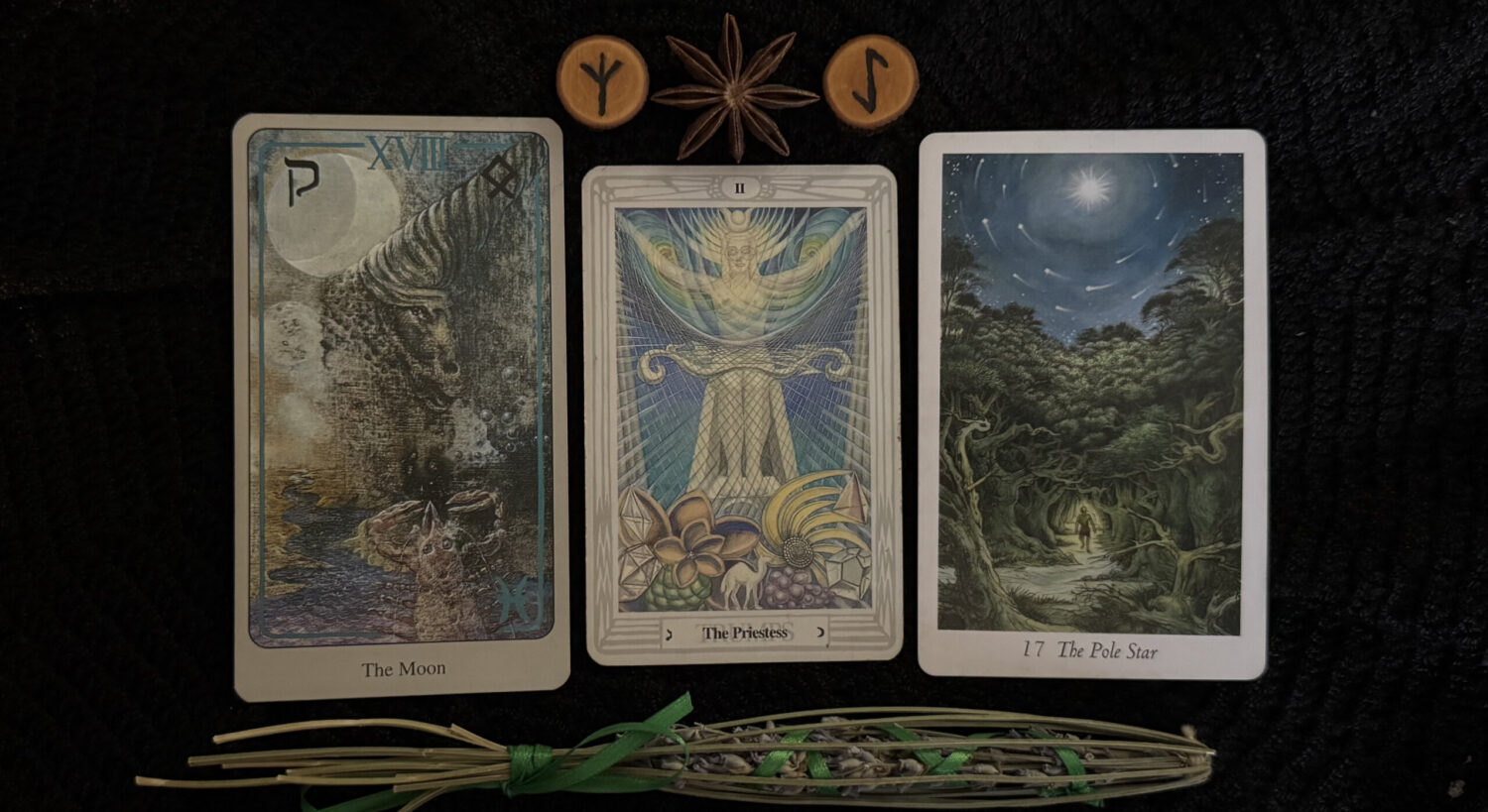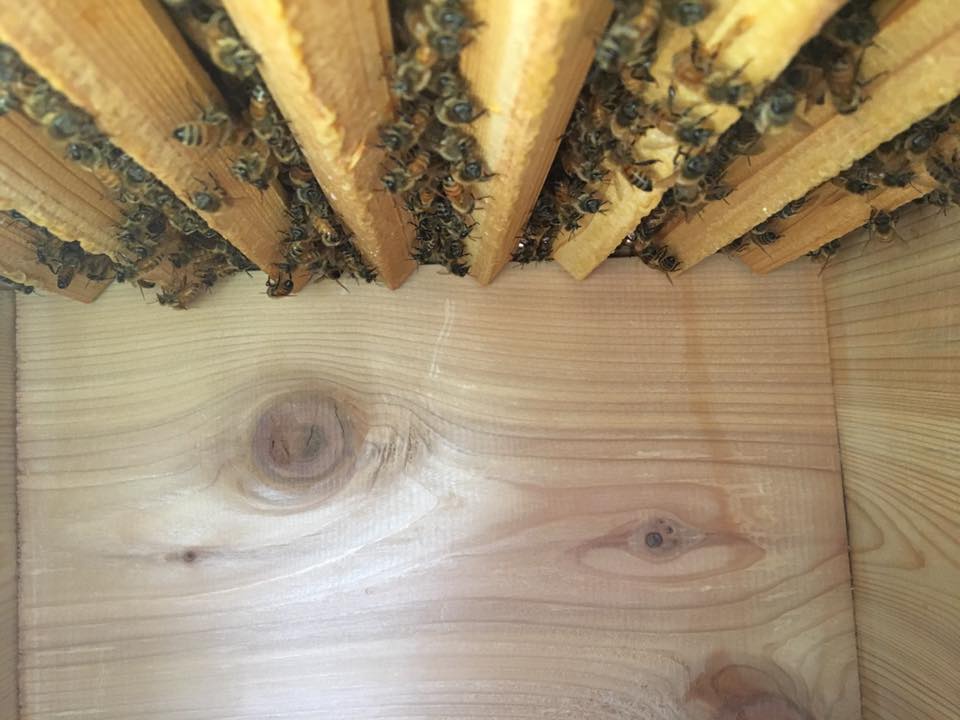When we went out to the Warré hive to fill the feeder with more syrup we noticed that they had begun building comb on the feeder. Lovely. Like many beekeepers in our area, we lost all of our hives during our unusually long, frigid winter. I had ordered bees for some new hives we were adding to the apiary so I knew we’d have some eventually, but losing them was just awful. The one advantage we had, though, was existing comb. I installed the bee package I ordered for another Warré in the original hive that we lost and they went right to work cleaning up the existing comb. Bees prefer to build natural comb instead of attaching it to a fake insert and there was a full box of com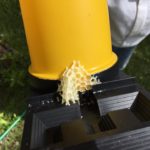 b for them to fill up with brood, pollen, and nectar. The best part? We don’t have to wait as long to add another box.
b for them to fill up with brood, pollen, and nectar. The best part? We don’t have to wait as long to add another box.
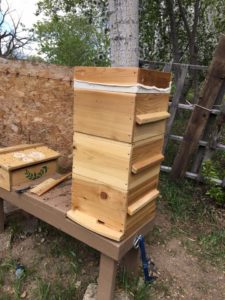
My husband, Jerry, made an inner cover to set a feeder on and added a box above the original box to create an inside feeder set up. He did a really nice job on it and it’s worked well, but now it seems that they’re attaching comb to it so we’ll have to deal with that soon. Warré hives are different than the typical Langstroth hives that many beekeepers use. Jerry made two horizontal Langstroth-style hives by putting two deep boxes side by side and then attaching them together, cutting the center section out to create the larger hive space. We put follower boards in each to create a smaller space for the 5-frame nucs I purchased for them.
But the Warré is unique, not only in its interesting structure but also with how we add a new box. On a normal vertical Langstroth hive, new boxes are added on top, while new boxes are placed on the bottom in a Warré. The theory is that bees like to build downward. They’re already checking out the top bars as we see in the top picture. Warré boxes can be ordered with inspection windows and both boxes have one so that I can take pictures through the window without disturbing the hive itself. Pulling up frames to inspect when they’re only supported by a piece of wood at the top is tricky and comb can break off so easily, so last year I didn’t look much at them.
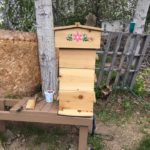
The bottom two boxes are where the bees will build comb and create the colony. A package contains 10,000 bees and a queen, but once she’s back from her mating flight, she can lay a massive amount of eggs per day, new bees emerging around three weeks later. If you look closely, you’ll see that awesome inner cover that Jerry made for inside feeding. Sugar water attracts all sorts of interested parties and feeding inside the hive is a better option to control that problem. We added a third box on top to protect the feeder. The quilt box that helps absorb moisture goes on top of the third box followed by the roof.
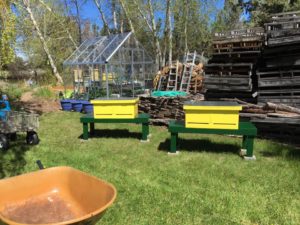
Jerry showed me a video of a guy in Africa who makes his hives out of grasses, mud, and other natural components. It was amazing to watch as he created a new hive. Bees will live in practically anything. Some beekeepers are creating hives from logs and some put their Langstroth hives in trees. Less a beekeeper and more one who is kept by bees, I confess to liking the horizontal hives along with the Warré more than the vertical Langstroth hives we have and I can use Langstroth-style frames instead of top bars like in the Warré and horizontal top bar hives. Langstroth deep boxes are heavy to lift when separating them for inspection them so not having to do that with the new horizontal hives is a blessing.
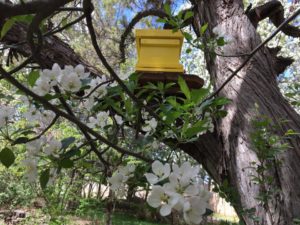
We have swarm boxes placed around our property with one right outside my kitchen window, apple blossoms tempting the scouts that are looking for a new home. We might get lucky and capture some bees this year to replace the colonies we lost over the winter. That would be wonderful! One of our hives swarmed last year to the tree above the hive. We caught them and then they decided to go back to their original hive. It was odd but at least they didn’t leave the property. The sound is telling, you know it instantly even if you’ve never experienced it before. And no words adequately describe the feeling I had when standing in the middle of a swarm of bees as they vortex upward to surround their queen on the branch where she landed. It’s peaceful and loving and fully resonant.
And while I await the possibility of colonies finding their way to our apiary, I’ll sit by our hives in complete wonder at their unified presence. They compel me to align with their resonance and as I lean closer, our vibrations become one.
I am forever in love with these amazing beings!

If anyone intends to either quote something I've written, or intends to post any part of my work, including my videos, on any other site, please ask permission before doing so. Any reposting of my work without permission can be considered as copyright infringement, so please ask. And if I give permission, you MUST clearly reference my name as author and my website. No exceptions. The words an author writes are sacred. Unapproved use is not.
Thank you... Jan Erickson
